
Inductees 2015
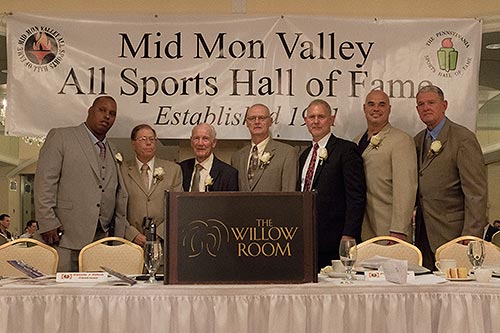
Meet the 2015 Mid Mon Valley All Sports Hall of Fame Inductees
The inductees were honored at the June 19 22nd annual Mid Mon Valley All Sports Hall of Fame Induction Banquet at The Willow Room in Rostraver Township.
Left to right: Yancey Taylor, Phil Pergola, Jack Green, Bill Blick, Eugene Gladys, Neil Forsythe for deceased father Ron, and Bill Ryczaj
Bill Blick
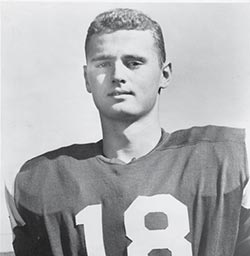
There was little question that Bill Blick would pursue a career in education.
“Since my dad was an electrician and my brother was an engineer, I wanted to do something in math,” Blick said. “I also wanted to stay active in sports, so I put the two together and went for education.”
Blick’s journey in athletics included being a standout in football and basketball at Rostraver High School, a three-year letterman in football at Temple University, and a successful basketball coach at Penn Hills High School. Those successes had their humble genesis in Webster.
“I don’t know how many times I shoveled the snow off the basketball court so I could shoot hoops,” Blick said. “There was a dimly lit street light by the court and I would go up and play late into the evening. I’ve attributed my shooting ability to the fact that I could not always see the hoop clearly. If we were lucky, we would have enough boys to play a game. After the game, we would walk up the hill to a freshwater spring and get a drink. I can still taste that cool, clear water.”
The ball field in Webster also was a gathering point for Blick, who also played Little League baseball, and his friends.
“We would play ball all day,” he recalled. “There were so many times my mother had to come to the field and get me for supper.”
When it came time to train for football, Blick had a rigid conditioning regimen at the field.”Since no one else wanted to play football, I would punt the ball and run down the field and try to catch it,” he said. “But I never made it. One summer day I was practicing punting and John Clark, one of our assistant coaches at Rostraver High, happened to drive by. He stopped and caught the punts for me, thus saving me from running down the field. I have no idea why he was there but he was. This is the kind of thing that made the coaches and teachers I had so special to me.”
Blick was a three-year letterman in football and basketball at Rostraver High from 1961 – 1963.
His gridiron career was highlighted when, as a junior, he was the quarterback and punter for the Leopards. That team was 9-0-0 during the regular season and shared the WPIAL Class A championship after battling Carmichaels to a scoreless tie in the rain and mud at Uniontown High Stadium on Nov. 16, 1962. The game ended with Rostraver on the Mikes’ eight-yard line.
As a senior in 1963, Blick again called signals and handled the punting in sparking Rostraver to a 5-4-0 record during a rebuilding campaign. He completed 50 percent of his passes and averaged 38 yards a punt as the Leopards rallied for victories in their final four games to overcome a 1-4-0 start.
Blick concluded his Rostraver basketball career by scoring 371 points as a senior in 1963-64 to finish second behind team leader Charles “Bud” Lemon’s 381. Among the Leps’ victories that season was a 67-63 decision over defending WPIAL champion Norwin on Dec. 27, 1963 at the Rostraver Junior High gym. Lemon (24) and Blick (17) paced the win.
At the school’s annual Class Night on May 14, 1964, Blick received the Richard O. Dolfi Memorial Scholar-Athlete Award. The award is presented annually (first at Rostraver and now at Belle Vernon Area High School) in memory and honor of Richard O. Dolfi, a top student and football player who died Oct. 22, 1961 of head injuries incurred the night before in a game at Scottdale. Dolfi was the son of Oswald and Emily Dolfi of Fellsburg. “(The Dolfi Award) was a special one for me because I knew Rich as a young kid and I was on the field the night he was injured,” Blick said. Blick was the third recipient of the Dolfi Award, following Tom Gilmer in 1962 and Roger Sullenberger in 1963.
Blick didn’t limit his energy or talents to sports, where he was captain of the football and basketball teams. He was president of the junior and senior classes at Rostraver High; a member and officer of the National Honor Society; member of the Pep Club, Student Council and Chemistry Club, and also had a role in the senior class play. He also received the 1964 Westmoreland County Scholar-Athlete Award sponsored by Judge David Weiss.
He received a full scholarship for football at Temple University and extended his athletic legacy for the Owls. “Everyone had to play on the freshman team my first year (1964) at Temple,” Blick recalled. “I played strong safety and quarterback and did the punting.”
He lettered each of his final three years at Temple, starting at strong safety and handling the punting. He captained the 1967 team as a senior and helped the Owls win their conference championship and gain bowl considerations. Blick graduated from Temple in 1968 with a Bachelor of Science degree in mathematics education and later earned a master’s degree in mathematics after studies at Indiana University of Pennsylvania and Pennsylvania State University. His teaching-coaching career at Penn Hills High School began in the fall of 1968 and spanned 35 years until his retirement in 2003.
As junior varsity basketball coach at Penn Hills from 1968-78, Blick compiled a 176-33 record. He served as varsity hoops coach from 1979-89 and led the Indians to a 200-96 record during that tenure. His 1986-87 team won the first WPIAL basketball championship in the school’s history and advanced to the semifinals of the state (PIAA) playoffs.
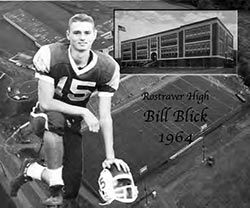
Blick was honored as Eastern Suburbs Coach of the Year in 1982, 1983, 1987 and 1990 Pittsburgh Press Coach of the Year in 1987, and East Boros Hall of Fame Sportsman of the Year in 1987. He was inducted into the Belle Vernon Area Football Hall of Fame in 2001 and received similar honors with the Penn Hills Hall of Fame.
He coached the United States All-Stars in the 1987 Dapper Dan Roundball Classic at Mellon Arena. He and George Vlassich, a former assistant at Penn Hills, ran the Rising Star Basketball Camp in the North Hills for 15 years.
Blick also played softball for several teams in the Mon Valley League and traveled the eastern United States to compete in weekend summer tournaments in the 1960s and 1970s. Dickie Wagner, one of his former managers, who later became a sportswriter, tagged Blick with the nickname “Fishnet” because “nothing got by him at first base.”
(Grateful acknowledgement to Ron Paglia for biography that appeared in the Tribune Review)
Ron Forsythe
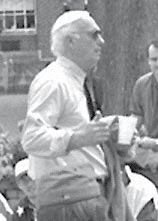
By the third game of his senior year pitching for Brownsville High School, Ron Forsythe was obviously bound for things beyond interscholastic baseball.
A lanky right hander, Forsythe opened the 1953 season with a no-hitter against South Union. Only two batters reached base that day, both on errors. As former Brownsville Telegraph sports editor Bob Petrillo put it, “Ronnie Forsythe enjoyed mid-season form as he had South Union at his mercy with pinpoint control.”
For both Forsythe and Brownsville, that season would be momentous. Forsythe two-hit German in his next start then beat defending WPIAL champion Redstone, 3-2. Playing for Charlie Slick, a sometimes cantankerous taskmaster, he alternated starts with Jack Parr, and Brownsville won a section title for the first time since 1941.
Brownsville lost in the playoffs to California, but in that game, Forsythe went 12 innings in a duel with future minor league pitcher Wayne Campbell. According to newspaper accounts, at the end of the afternoon, Forsythe appeared strong enough to throw even longer.
Forsythe was dominant as a high school senior, but he had already shown unusual promise. In the Pat Mullin Junior League, playing for West Brownsville, which was coached by his father Jim, he had been stingy with hits and runs. He barely missed a no-hitter against East Millsboro in 1950, surrendering only a bloop single in the first inning, and was the league’s best pitcher for two seasons.
He pitched solidly as a sophomore at Brownsville, then got off to a rocky start in 1952. He corrected things with a four-hit, nine-strikeout win over Donora and was nearly unhittable for the next year and a half.
In 1952, Forsythe pitched for California in the Mon Valley Section of the Washington County Junior Legion League. His win over Monongahela late that season gave California the District 23 title. That team included a remarkable assemblage of players who would later sign professional contracts: Campbell (Florida State League), Don LeJohn (Brooklyn Dodgers), Larry Papini (Boston Red Sox) and Billy Whiteko (Philadelphia Phillies).
Forsythe had also begun to draw the attention of professional scouts, including Jim Russell, the former Pirate from Fayette City. Russell’s interest grew after Forsythe graduated high school.
In 1953 and 1954, he compiled a series of notable games in the Pigeon Creek-Warner League. Pitching against older, more experienced players, he threw a no-hitter against Marianna, allowing only a walk and a hit batter. He one-hit Pulaski, gave up only two hits to Washington and to Bentleyville, a game in which he struck out 15. He took a no-hitter into the sixth inning against Canonsburgbefore giving up his only hit of the game, a two-out single.
Russell, who had already signed LeJohn and Jack Parr to Brooklyn Dodger contracts, added Forsythe to his list of local finds early in 1955. Forsythe went to spring training in Vero Beach along with Parr, and both were assigned to the Union City (TN) Dodgers of the Class D Kitty (Kentucky-Illinois-Tennessee) League.
The high school battery mates combined for 18 victories that season. Forsythe led Union City with 11 wins and 164 innings pitched.
In 1956, Forsythe appeared in 50 games for the Thomasville (GA) Dodgers in the Class D Georgia and Florida League, going 7-7 with a 3.71 ERA.
The 1957 season found him with the Cedar Rapids Rangers of the Class B Indiana-Iowa-Illinois League. That league’s nickname – the Three-Eye League – must have appealed to Forsythe’s irreverent and self-deprecating sense of humor. He accomplished all he did in baseball despite having lost the use of his left eye in a childhood accident. To pass physicals before spring training, he memorized the entire eye chart. To hold runners on first base, he worked out on the sly hand signals with his catchers. More remarkably, although he was 6-3 and weighed nearly 200 pounds, he relied not on overpowering hitters but on keeping them off-balance with sharp placement of an assortment of pitches delivered from varying angles.
Forsythe finished just 3-3 at Cedar Rapids, but in 1958, he had his best season in professional baseball. Playing for future Phillies and Giants manger Danny Ozark, he pitched in 42 games as both a starter and reliever for the Macon Dodgers of the Class A South Atlantic League. He was third on the team in wins (10) and innings pitched (137) and completed five of his nine starts.
At a time when young pitchers were expected to undergo considerable seasoning before joining the parent club, the 23-year-old Forsythe was ranked among the top 15 pitching prospects in the Sally League, according to the statistical metrics of Baseball Reference.
Forsythe played for three teams the next year, including a second stint at Macon. Injuries, including a line drive that broke his throwing arm, had begun to take their toll.
He ended his career in 1960 as a player-coach with the Green Bay Dodgers, back in the Three-Eye League.
In six seasons of professional baseball, he went 37-34, including 10-6 in Class A, the highest classification to which he advanced. Forsythe pitched 532 innings over 182 games, completed 12 of 38 starts and compiled a 4.26 ERA.
Even as his baseball career wound down, Forsythe had begun to follow another of his passions – an unusual one for an athlete of that era – literature. He completed a degree in English from California State College in 1961 and immediately began teaching at Arundel High School in Gambrills, MD.
He was 28, had a secure teaching position and seemed on his way to a productive career, but in 1963, Forsythe made a life-altering decision. Disgusted by the assassination of John F. Kennedy and many Southerners’ virulent reluctance to integrate education, he quit his teaching job, joined the Peace Corps and moved to Africa.
Odd as that decision might have seemed, it was not out of character given his family’s tradition of public service. The youngest of eight children, he was born in 1935 to Jim and Bessie Forsythe. His father was Burgess of West Brownsville for many years, two of his brothers fought in WW II and a sister spent decades as a Wesleyan Methodist missionary in South America.
Forsythe, who once said that American racism “made him embarrassed to be white,” arrived in Nigeria when the country was on the brink of civil war. He taught for 27 months in the hamlet of Asaba. Villagers, many of whom had never seen a white person, called him “onyacha” – “peeled one” – because they believed he had been somehow stripped of his black skin. For the rest of his life, he would affectionately remember the people and the country.
“What made Nigeria so great was it purged me of nonsense,” Forsythe said years later. “Where everyone is poor and death a daily visitor, I came to value conversation, a cold glass of clean water, a dry shirt, and visitors. You learn to appreciate the old verities, the manners, the moral imperative to do right and not shame your house, your family name, your village. I would go back in a minute.”
Forsythe returned to America and completed his master’s degree in English at North Dakota State University, where he also met his wife, Cherryl, a nurse.
Forsythe was hired as a faculty member at California in 1968 and became pitching coach under Mid Mon Valley Hall of Fame member Mitch Bailey, who coached the Vulcans for 20 years.
From his love of baseball and his empathy with the underprivileged and marginalized, Forsythe, son of a miner who lost four fingers when his left hand was pinched between two coal cars, created two enormously popular courses at Cal, Baseball in Literature and Black Literature.
Some students saw the course titles and thought they were signing up for a three-credit lark, but Forsythe taught as his father and Charlie Slick and the Dodger organization had schooled him. He was iconoclastic, funny and charismatic but also dismissive of slackers and intolerant of excuses. His reading lists were extensive, his interrogation of students pointed, his tests challenging. Forsythe’s detailed critiques of student essays were both immensely beneficial and brutally honest.
As semesters wore on, his classrooms emptied of the uncommitted. However, his office filled with legions of disciples who enrolled in any course that listed as its instructor “Forsythe” or just came to hang out and listen. He was an entertaining lecturer, an insightful analyst of literature, a singularly skilled editor and a compassionate but pragmatic advisor.
When poor health forced him to retire in 2004, he was named an emeritus professor. As a lasting tribute to his popularity and repute, a scholarship was created in his name after his death, from pulmonary fibrosis, in 2006. Now fully endowed, the award is given each year to an outstanding English major at California.
David Ferris is a lifetime family friend whose father, Sumner, also taught at California. Now an author who teaches at the University of Akron, he attributes his accomplishments – professional and personal – directly to Forsythe: “His understanding of grammar and composition exceeded that of anybody I’ve met in 16 years of professional writing. Mr. Forsythe had a grasp of the language like few others: He understood what the pieces are, how they work together, and what a diligent writer might do with it all – from composing an intricate sentence, to spinning a work of history or imagination that would reverberate across ages. Mr. Forsythe’s lessons led me to an internship with a Pentagon subcommittee. They took me to an honors internship in the state capital. Because he showed me how, I have written four books. I have worked for Rolling Stone, the Tribune Review, and the Village Voice. I’ve won a few awards for writing – I believe not just because of the techniques he taught me, but because of the worldview and ethics he instilled. I’m a professor, and I feel like I’m at my best when I’m emulating him. As a journalist, author, publisher, professor, father, husband and adult, I don’t go a day without tapping some lesson, ability or charge Mr. Forsythe imparted to me. And if I’m any good in any of those roles, it’s because he showed me the way, and I followed.”
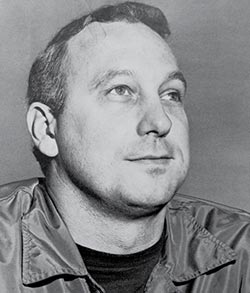
Forsythe expressed no regret that he didn’t play in the major leagues. In fact, he rarely mentioned his baseball career. He brought the game up only to evaluate the Pittsburgh Pirates’ prospects or to relate an amusing anecdote about his own foibles or the peculiar behavior of people he had encountered. He was a sparking conversationalist and raconteur but preferred to talk about teaching, writing, movies, politics, jazz, international affairs or growing up in the Mon Valley. The walls of his office were hung with framed pictures of ballplayers but none of himself, in any uniform. He kept scrapbooks about Jackie Robinson and Hank Aaron and Babe Ruth but none of his own clippings. Only a single photo of Forsythe made the wall – a black and white shot taken in the late 1970s. In it, he stands before a classroom, waving one of his omnipresent cigars to emphasize a point.
The demands of teaching forced him to quit college coaching sooner than he wanted, but Forsythe never left baseball behind. He made a yearly pilgrimage to Cooperstown, the game’s shrine, and spent the last two years of his life writing short stories, many drawing on his years in professional baseball. He played in local amateur leagues and was a lifetime student of the fundamentals of pitching who spent countless hours tutoring youngsters in “the Dodger way” of throwing a baseball.
Perhaps his most successful protégé was his son, Neil, who pitched at Rollins (FL) College and Oklahoma State University and was a professional prospect until he, too, injured his arm.
Cherryl Forsythe, who is now retired, and Neil, a youth counselor and pitching coach at California Area High School, one of the top programs in the WPIAL, both reside in California. An older son, Aaron, lives in Kent, WA. He is director of research and development for Magic: The Gathering, a trading card game popular worldwide, and has three daughters: Athena, Astrid and Arwen. Ferris remembers the Forsythe family happily: “Their house was a place of joy, learning, and instruction. If you wanted to learn how to write so you had a better shot at getting into college, you went there. If you wanted to learn how to throw a baseball, you went there. If you wanted some beef jerky and a dozen belly laughs, you went there. If you wanted brutally honest feedback about your embryonic writing, you went there. On a Friday night during the school year, you could have sold tickets for a spot at the Forsythe family kitchen table. Some of the most fun I’ve ever had was in the Forsythes’ presence.”
A bum arm might’ve kept Ron Forsythe from “the Big Show,” but as a major influence on his family, his students, his many friends and the aspiring pitchers who sought his guidance, he exceeded by far the promise he showed as an 18-year-old phenom in that championship.
(Grateful acknowledgement to California University of Pennsylvania Professor Alan Natali for this biography on his office mate at Cal)
Eugene “Gene” Gladys
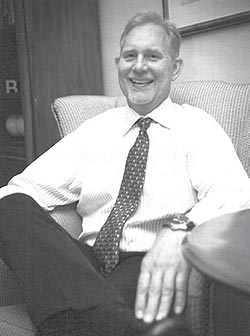
Eugene “Gene” Gladys was born November 13, 1957, the second of seven children born to Joseph and Alice Gladys in Monessen. Because Joe Gladys was already a football coach at Monessen, Gene grew up around Greyhound football. At the age of nine, Gene started playing in the Monessen Midget Football League under Coach Larry Oliver. From there he made the progression to Junior High and then became a Greyhound player coached by his father. Twice winning the Big Ten Conference as a quarterback and linebacker, Gene was named All- Big Ten Conference twice and was selected to play in the Big 33 All- Star Game. After his senior year, Gene was awarded the Judge David Weiss award, as the outstanding football player-scholar athlete in Westmoreland County. One of the most heavily recruited football players in Western Pennsylvania his senior year, Gene decided to accept a scholarship and spend his next four years playing for another legendary coach named Joe at Penn State. The draw of Happy Valley, the chance to play with and against some of the best players in America, and the emphasis that Joe Paterno placed on academics convinced Gene that Penn State offered all he desired. He became the first Monessen Greyhound to play under Joe Paterno at Penn State.
Gene thrived as a football player at Penn State becoming one of the rare four-year Letterman in Nittany Lion history. A two-year special teams star and then a two-year starter at outside linebacker, during his tenure at Penn State the team was ranked in the top 10 three out of four years. The one major defeat was a loss in the Sugar Bowl against Bear Bryant and Alabama for the National Championship. During his senior campaign, Gene was the team leader in sacks and tackles for losses, also he was the team’s second leading tackler overall. The big game of 1980 was Pitt vs. PSU, the number 2 team in the country against the number 3 ranked team. This game featured 37 future draftees into the NFL, and 5 NFL future Hall of Fame players. In a nationally televised contest, Pitt won the game and Gene was named the ABC-TV outstanding player of the game for Penn State, winning a Chevrolet scholarship for the school. Many believed that the winner of this game should have been given the chance to play for the National Championship. Penn State went on to defeat Ohio State in the Fiesta Bowl, where Gene was named to the All-Decade team of the 1980’s for his outstanding performance in the game. Post-season honors included All East and third team All-American. Graduating with a degree in Business Administration, Gene was planning on going to graduate school unless the NFL was going to be the next stop.
Drafted in the 8th round of the 1981 NFL draft by the New Orleans Saints, the team with the worst record in the NFL, appeared to present a chance to make the team and get playing time. Unfortunately in the last pre-season game against Philadelphia, Gene suffered a neck and shoulder injury which placed him on injured reserve to start the season. By midseason the Saints had used all of their protected player options and did not want to risk bringing Gene back in an unprotected move. When preparing for the 1982 season, Gene was told he would be moving to inside linebacker and projected as a starter. At the start of pre-season camp, another neck injury and a fourth concussion led to team doctors advising Gene that there was a risk of permanent damage to his neck, at which point he decided to pursue another path in life.
Married in 1982 to the former Annette Spackman, also a Penn State graduate, they are the proud parents of two children - Selina, an honors graduate from Virginia Tech, and Lukas, currently a dean’s list student at Penn State. Gene and Annette have resided in Fairfax Station, VA since 1994. Owning several businesses for the past six years, Gene has been employed as a senior mortgage banker by Churchill Mortgage, winning numerous company awards as one of the top 10 originators in Churchill and becoming a member of the President’s club. For many years, Gene was a coach in the Fairfax County youth leagues having coached soccer, baseball, basketball, lacrosse, and football. In his final year of coaching football, with his son as his star player, the team won the Fairfax County Championship. Guess he learned a thing or two from his legendary father, Joe Gladys, who has the distinction of having had eight former players drafted by the NFL. Joe was a 1996 Mid Mon Valley All Sports Hall of Fame inductee and a member of the selection committee in the reorganization of the Mon Valley Sportswriters Hall of Fame in 1994.
Jack Green
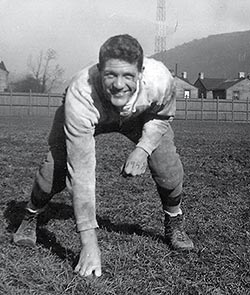
It is unlikely Elisha Graves Otis had John Gilbert “Jack” Green in mind when Otis invented the safety elevator in 1853. That was, after all, nearly 80 years before Green was born.
“Yes, I’ve experienced a lot of ups and down in life,” Green, of Charleroi, said. “Adversity has knocked more than once, but we’ve always had the good fortune to be able to bounce back.”
Reflecting on his innate ability to find the Up button in life, Green pointed to his athletic experiences as a strong foundation.
“You learn a lot in sports,” Green, a 1949 graduate of Charleroi High School, said. “I was blessed with great coaches and teammates, men who encouraged me and taught me things that go far beyond the athletic arenas. A lot of what I learned from athletics, along with support from other people, has guided me through life.”
One of eight children born to the late Gilbert and Daisy Green, Green grew up in Speers.
“Most of us were in the same boat, we really didn’t have much but didn’t realize we were poor,” he said of his humble beginnings. “I remember the time the kids in our neighborhood needed a new baseball. We didn’t have the money, of course, so Billy Utterback talked his father into giving us a live chicken. We took that chicken door to door, sold chances at five cents each and raffled it off. We raised the dollar for the baseball and had a few pennies left over.”
Green credits his late sister Lois’ husband, the late Karl “Kutcy” Sauritch, for guiding him toward athletics in Charleroi. Sauritch suggested to Lois that she send Jack to the Charleroi High School Stadium to participate in summer recreation programs there. Green was getting ready to go into eighth grade at the time.
“I thought I’d give it a try and told my mother about the idea,” Green said. “She was OK with it, but she had something else in mind too. She knew we would be walking the railroad tracks between Charleroi and Speers, so she instructed me to take a coal bucket and pick up coal for the winter. We would hide the buckets in the weeds near Maple View and then retrieve them on the way home.”
Green, 77, vividly recalls his first meeting with the “man in charge” at the stadium workouts.
“I was there only a short time when this man walks up to me and says, ‘Boy, what’s your name? Where are you from?’ “Green said. “I thought I was in trouble because I was from out of town.”
On the contrary, the man was George “Beans” Chacko and he wanted to talk to Green about enrolling and playing sports at Charleroi Junior High School.
“I owe a lot to Mr. Chacko,” Green said. “He was the first man who took a real interest in me. He got me started in sports. At that time, we had a choice of attending eighth grade at the school in Speers or going to Charleroi. (Chacko) talked to my parents and got their approval. I was beside myself. I didn’t have a lot of coordination, I couldn’t even skip for layups, but I was going to be playing basketball on (Charleroi’s) hardwood floor.”
Green cracked the starting lineup at Charleroi that season. Teamed with veterans Fred Uhlman, Angie DeFrancesco, Ed Stark, Pete ‘Yick’ Gregory and David ‘Dink’ Glunt, he helped the Little Cougars advance to the Junior WPIAL championship game, where they lost to Aliquippa 44-43. Green said Uhlman, who was also a teammate in high school, was “the best player around” in those years.
Green advanced from that start in junior high to earn 11 varsity letters at Charleroi High School – four each in football and baseball and three in basketball. He also received the coveted Leslie Morgan Award as the top athlete at CHS in his senior year. That trophy is among the memorabilia on display at his home, as is a football from the Cougars’ 7-6 victory over Monessen in 1948.
“We were very excited about winning that game, especially since it was our senior season,” Green said. “I approached Mr. (Armand) Niccolai, who was Monessen’s coach, and said I would like to have the game ball. He said, ‘Sure, son,’ handed it to me and congratulated us on a good game. What a gracious man he was.”
Green was only 15 and “rather in awe” of some of the older players on the CHS team guys as a freshman in 1945.
“Steve Stepanian had returned from a sabbatical and was our coach,” he recalled. “He thought I had good hands and had me playing end. A couple of our ends got hurt in the third game and Steppy sent me in. Man, was that a rude awakening, a real education. We were playing Donora, which went on to win the WPIAL title. They had Pete Ballaban, Roscoe Ross, Bimbo Cecconi and a couple of guys named (Arnold) Galiffa and (Deacon Dan) Towler. You may have heard of them. They were men among boys and after getting bounced around a couple of times, I thought, ‘Welcome to the Mon Valley Conference, Jack.’”
Green also played ninth grade basketball for Frank “Boom” Cantoni, who had replaced Chacko, and also gained a spot on the varsity baseball team. Pete Garnic coached the baseball team and had a veteran team that included, among others, Pete Bakaitis, Ed Holod, Ed Nandor, Adrian ‘Adie’ Sannier and Charlie Sedor.
“Baseball was always my first love,” Green said. “I thought it would be my life, that I could make a (pro) career of it.”
That passion notwithstanding, Green, an infielder, couldn’t break the starting lineup. And it wasn’t until the third game of the season against Washington at Charleroi that Garnic called on him to pinch hit.
“I got lucky,” Green said. “I hit a double into right field and (Garnic) kept me in the game. The next time up I hit a double into left. Eventually, I got to play more.”
Ensuingly, Green played football for Virgil “Vap” Paterline and Currie, who moved from Monessen in 1947 to begin his long career at Charleroi, and basketball for Robert Bornscheuer and R. James “Rab” Currie. Paterline coached football only one season and Bornscheuer was the head basketball coach for two years.
“Rab was a major influence in my life,” Green said. “He was a great coach and an outstanding teacher. During the summer between my sophomore and junior years, he called me aside at the stadium and told me I had the potential to go to college. But he also said, ‘I’ve been looking at your transcripts and you aren’t taking college (preparation) classes.’ He drove me to the high school and personally changed my curriculum. I went from typing, shop and speech to French, science and math courses. Rab said he was giving me two years to shape up and you never said no to him.”
Green gained some post-season honors in football but is quick to point to the quality of the players in the Mon Valley Conference at the time.
“I was an end and there were some great people at that position when I played,” he recalled. “Monessen had Joe Koval and Nick Chomko, two of the best ever; (Jim) Roberts played at Brownsville and made first team two years in a row, and we had Mike Buraczewski my senior year. I was lucky enough to make second team and honorable mention a couple of times.”
Still, Green garnered enough attention to find his way to Duquesne University. He credits legendary Charleroi sportswriter John Bunardzya for that opportunity.
“John was always good to me, going back to my time in junior high school,” Green said. “When I was a senior he introduced me to Sam Silvers, who ran a theater in Donora and who had strong ties with Duquesne. Like John, Sam helped a lot of kids get into college. Because of him, one of my teammates, (running back) Joe Cardinale, and I got scholarships to Duquesne.”
Phil Ahwesh was the head coach at Duquesne, and Green earned a starting position with the freshman team. The newcomers made up what many Duquesne faithful called “the best freshman team ever” at the school.
“We played Carnegie Tech and Geneva and even went against a team from Western Penitentiary,” Green said. “We were undefeated (8-0) and thought our season was over. But the Macs Club in Charleroi wanted us to come to town to play Massanutten Military Academy from Virginia in a benefit game. Massanutten had Bob Loy, Jack Jones and Billy Shaffer of Charleroi and Walt Malinchak and Andy Zubic of Monessen on its squad. Jimmy Cherocci, who was from Monessen, and Joe Cardinale and I were at Duquesne, so it was like a homecoming for us.”
Green and Cardinale had a successful sophomore year at Duquesne and were looking forward to more playing time as juniors, but the school decided to drop football as a varsity sport. Green lettered one year in baseball, but faced with no football at the start of his junior year decided to drop out of school. He took a job at the Clairton Works of U.S. Steel Corp.
That was followed by another life altering move as Green became engaged to his childhood sweetheart, Beverly Bassi. They had met at age 14 at a dance at the Cougar Canteen on the third floor of the Charleroi Borough Building. It was shortly after their first dance that Beverly began keeping a scrapbook on Jack’s athletic career at Charleroi and Duquesne.
“She did a great job keeping track of me over the years,” Green said.
The Greens were married on February 10, 1952.
A little more than three months later, on May 29, Green was at Indiantown Gap Military Reservation in Annville, PA to begin basic training with the U.S. Army.
“They told us we were all going to go to Korea,” he said. “But I was sent to Germany and served there for 19 months. I had Artillery ROTC training at Duquesne and I guess that swayed their decision.”
Green’s battery commander in Germany also was the division football coach and recruited Green to play for his team.
“I was on TDY (temporary duty) for three months and did a lot of traveling in Europe with the football team,” Green said. “One of our stops was in Nuremburg and that turned out to be a special trip. Ted Zelinsky and Bill Lundy, both of Charleroi, were stationed there and we got together for dinner.”
Following his discharge from the military, Green returned to Charleroi and contemplated what he wanted to do with his life.
“I knew I didn’t want to go back to the mill in Clairton, so I took a job with Charleroi Supply Company,” he said. “Beverly and I had set up housekeeping and I needed to work.”
But Green was looking for something else, so he turned to Pete Sance, a Charleroi resident who was president of Pittsburgh Steel Company at the time. Green got to know Sance when he traveled to and from Duquesne University and Sance was taking his daughter, Melina, to school there.
“Mr. Sance was very helpful and very straight with me,” Green said. “He said he could arrange for me to have a job with the company on one condition – I had to go back to college and get my degree. I’ve always been grateful to him for that.”
Armed with the mandate from Sance and his G.I. Bill from the Army, Green returned to Duquesne University. He attended night school while working at the Monessen Plant of Pittsburgh Steel and earned his degree in 5½ years. He worked in the Industrial Engineering Department at the steel company and his supervisors were John Moussiaux and Nestor Henrion, two of Charleroi’s most accomplished athletes.
It was during this time that Green’s brother-in-law, Attorney Melvin B. Bassi, and Tom Brown, who sold Sealtest dairy products for the Reick and Mc- Junkin Ice Cream Company in Charleroi, approached Green about becoming a high school football official. He accepted the offer and in addition to working scholastic games also volunteered as an official at Charleroi Midget Football League games. Among the others donating their services to the youth program were Bassi, Brown, Steve Stepanian, Carmen DeMarco, Eugene Pro, Regis McMonagle, and Gene Turtzer.
After four years of working high school games, Green finally got the call to the college level.
“Mel was injured the day before he was to work the Waynesburg-Westminster game,” Green recalled. “I got a call telling me I would be the head linesman for that game. Dave Fawcett, who was the commissioner of the Eastern Collegiate Football Officials Association, was a Westminster graduate and attended all of their games. I was nervous, to say the least, but it worked out well. I was at the right place at the right time.”
Another brother-in-law, Karl Sauritch, directed Green to officiating basketball games.
Fate struck another blow, however, on November 5, 1978.
“(Peter) Bud Roman, Dave Bergstedt, Carl Crawley and I were working a game at Yough,” Green said. “I began feeling ill and told Bud I was going to sit down on the sidelines. There were only four or five minutes in the first half and I figured it was indigestion and maybe a Coke or some water would help. But the Yough team physician saw me walking toward the ambulance and had me lie down. He recommended I go straight to the hospital. I wanted to go to Mon Valley (Hospital), but he sent me to Jeannette because it was closer. He said, ‘You have heart problems,’ but I didn’t believe him. Hell, I was only 47 years old. But he was right. I had an aneurism and he probably saved my life.”
Roman, one of the area’s top sports officials for many years, recalled Green as an “excellent official” in football and basketball and was especially high in his praise of Green’s role as rules interpreter in both sports for the Mon Valley chapter of officials.
“Jack certainly made our lives as officials much easier,” Roman, of Monessen, said. “He knew the (rules) book forward and backward. If we had a question, he had the answer and would explain things in detail. Rules change every year and (officials) need to be on top of things. Jack’s efforts were beneficial to us and ultimately to the coaches and players whose games we worked. I always thought Jack would have made a great teacher. He was very thorough and really cared about his role as rules interpreter.”
Green was scheduled to move up to Division I college officiating at such venues at Pitt, Penn State and West Virginia the next year but that never happened. He didn’t require surgery but did spend three months recuperating at home. A telephone call from Paul Zolak, then athletic director at Ringgold High School, brought welcome news.
“Paul offered me a job as the permanent clock operator for (Ringgold) games,” Green said. “He’s always been a good friend and he said the school district would welcome someone with my experience. I took the job and it proved to be good therapy. I welcomed the opportunity to return to sports in a useful capacity.”
Word of Green’s acceptance of the Ringgold assignment and his quality work there quickly spread to Pittsburgh. Emil Narick, commissioner of the Major Eastern College officials, called and offered him the assignment as a permanent clock operator at West Virginia University. He worked some 10 years in that capacity for Ringgold and the Mountaineers.
It was during this time that Lou Farkos, who owned Tenth Street Pharmacy in Charleroi, suggested to Green that he take up photography.
“I had a camera I bought while stationed in Germany and liked the idea,” Green said. “Lou taught me the basics and I also took photography courses at the (Mon Valley) voc-tech school and from a master photographer in Wexford.”
Green fell victim to the bankruptcy problems that beset Wheeling-Pittsburgh Steel Corp. in 1986.
“Like many others, I didn’t think anything would happen to the company,” he said. “They had just installed the new caster and the rail mill at Monessen and I figured I’d be working there a long time. But the company went out of business, the mill closed and, after 33 years of service, I was out of a job at age 58. I vowed I would never work for someone else.”
The Greens opened a store in Charleroi at this time and Jack started going to California University of Pennsylvania, where Elmo Natali and Bill Bennett gave him work doing sports photography for the College Times.
“Beverly and I went on a business trip to the clothing outlets in Reading and to Hershey to talk with a friend about what equipment I would need to open a photography studio and also do videography,” Green said. “My friend suggested I incorporate a video store with the photography studio. He explained how things worked and I knew I wanted to go in that direction; that is, work with videos. Beverly and I came up with a business plan on the way home. There were two video stores in town at the time, Dee’s and All-Star Video and I knew I had to have something different to compete. We needed off-street parking and I felt a drive-through window would make it even more convenient.”
Green had his eye on a building in the 300 block of McKean Avenue (across the street from Pizza Hut), but the owner, Joe Marshall, had just sold it to two dentists (John J. Charletta and Richard Stoops). A lease agreement was reached, Green recruited the carpentry and remodeling talents of Tom Vezzetti and Allan Agamedi and Jack Green’s Video World and Photography opened in time for the holiday season.
“I knew from nothing about movies, actors and videos,” Green said. “But my brother Frank’s wife, Dot, was an expert. I listened to her and we bought the inventory of a store that was going out of business in the Monroeville area. Pierre Luti produced a great sign for us and the drive-through window was a big hit.”
After several years of working long hours and re-investing in the business, Green was “finally making a profit,” he recalled. “Then came the fire,” he remembers in reference to a devastating 1993 blaze that gutted his business.
“I wasn’t sure about what we could or would do,” Green said. “But Joe and Josie Pelzer offered us a building they owned at 222 McKean Avenue. It had rental apartments on the second floor, so we decided to take the plunge, buy it and go back into business as a video store only. Don Smaracheck did the remodeling, Pierre came up with another sign, we bought new inventory and were back in business in less than three months.”
The business operated until 2000.
“That’s when my brother-in-law, Karl Sauritch, died and it hit me rather hard,” Green said. “I was 70 years old and figured it was time to stop and enjoy life. We sold the business and the building.”
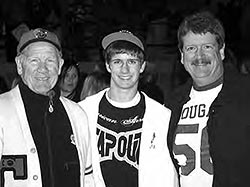
Jack is pictured with his grandson, Matthew and his son, Jack
Green and his wife are the parents of two children.
Their son Jack was a standout football player at Lafayette College, where he earned a degree in mechanical engineering. He works in that capacity at the Homer City Power Plant, and he and his wife Kathy are the parents of two children, Kaitlyn and a son, Matthew. The family resides in Delmont.
The Greens’ daughter, Debbie Corridoni, is a registered nurse and, like her father, is a graduate of Duquesne University. She is the manager of the same day surgery center at Allegheny General Hospital in Pittsburgh. She and her husband Anthony are the parents of two daughters, Maria and Mandy.
(Grateful acknowledgement to Ron Paglia for this biography that appeared in the Tribune Review December 23, 2007)
Phil Pergola
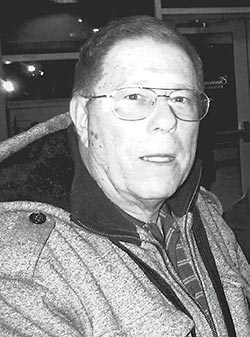
In 2013 Phil Pergola returned as the Ringgold boys’ basketball head coach. He had spent the past ten years guiding California Area’s athletic program (2004- 2014) along with coaching their boys’ basketball team.
One of the winningest scholastic basketball coaches in the state, Pergola coached 45 years at four schools and has a career record of 592-503. His career showed a knack of building winning traditions wherever he coached.
Pergola began his head coaching career at Mon Valley Catholic, where he won 92 games from 1970 through 1977. He then coached Charleroi High School’s basketball team from 1977 through 1986 and won 120 games in nine seasons.
Mon Valley Catholic’s 1971-72 and 1972-73 teams compiled season records of 17-8 and 17-6 respectively. Pergola coached the 1983-84 Charleroi team to a 24-5 final overall record and the 1979-80 Cougars went 18-8. At Mon Valley Catholic Pergola served four years as athletic director.
His third and longest coaching tenure was at Ringgold, where he guided the Rams for 18 seasons from 1986-87 through 2003-04. Pergola’s final Rams team finished 13-10 overall after a 5-0 start that included Ringgold winning its third Mon Valley Shootout Classic in six years as well as the Bradford Tip-off Tournament. Four records were set by his final Rams squad and one of those was Troy Yonkers bettering Mike Horan’s career record of 210 blocks with 220 career rejections. Both athletes played 83 games.
Several of the many standout players whom Pergola coached at Ringgold were Mike Horan, Jamont Kinds, Jeff Tyree, all-time assist leader Czar Walsh, Brian Miller, Eric Watson, Chris DeBerardinis and Clay Wyne. Six of his players that scored 1,000 or more career points included Andre Costantino and Kevin Lee at Charleroi and Ringgold’s Yancey Taylor, Miller, Horan and California’s Chris McVicker. “It would have been seven if Dan McVicker, who had 993, wouldn’t have worn low cut shoes and sprained his ankle in the opening minutes of his last game at Mon Valley Catholic,” recalled Pergola.
Pergola’s son, Ryan was a reserve on the 1995 state title team while his other son, Kevin, was a three-year letterman.
Besides coaching the Ringgold varsity, he ran the school district’s elementary school basketball program which was spread over six gymnasiums. “Talk about a logistical nightmare!”
“I’d get calls at 9 in the evening because a gym wasn’t open or because there was a school play there,” he said. “Just putting that all together took a lot of time.”
There was also the Ringgold Boosters undergraduate tournament, formerly the Donora Youth Athletic Association undergraduate tournament, which was one of the oldest undergrad tournaments in the country. Pergola had been in charge of it which meant lining up officials and teams.
Plus, there were the camps and clinics that he helped organize.
“It has become almost a 12-month-a-year job.” he said. “I didn’t mind doing all that when I was in my 40s but it has become tougher and tougher in recent years.”
Pergola was a driver’s education instructor for 12 years at Mon valley Catholic, which afforded him more time to spend on basketball. Pergola taught English at Carroll Junior High from 1982 to 1985. At Ringgold High School Phil had nineteen years as an English teacher along with fourteen as yearbook moderator. But as an English teacher, he found it tougher to prepare for games.
“’I’ve always been a teacher first,” he said, “Basketball never took away from what I had to do in the classroom. If anything it was the other way around.”
Pergola won 233 games at Ringgold in his first stint, including the historic 1995 PIAA Class AAAA championship. After losing a narrow WPIAL semifinal game to McKeesport in 1995, Ringgold rolled to five straight state tournament wins. We had the type of team that kept getting better all year,” Pergola said. “Mike Horan had to be the best rebounder in all of Pennsylvania.” Another memory that season was Czar Walsh forcing overtime in the PIAA Western Region Semifinals against Erie Cathedral Prep, which the Rams won in double overtime. Ringgold became the first-ever WPIAL team to win the Class AAAA state crown since the PIAA moved to four classifications with a 71-66 victory over Williamsport. “Winning the state championship was definitely my high point,” said Pergola. “When you win it, its like, Did, we really do this? It’s a wonderful experience. To win a state title, so many things must go right. It’s the road you took to get there, that’s what you remember. It’s the trip. You have to enjoy it.” The only other WPIAL team to win the Class AAAA state title in boys’ basketball heading into 2014 is Penn Hills in 2004.
Pergola’s 1989-90 Rams compiled a 29-3 overall record and won the WPIAL Class AAAA title before losing in overtime by two points in the PIAA finals. “I thought we had a good team,” Pergola recalled. “Counting undergraduate tournament and summer leagues, we went 39-0. The Rams opened the season with victories over Central Catholic, 81-69, and perennial nemesis Bethel Park, 67-40, before losing to West Mifflin, 75-72, in overtime. Ringgold then won 11 in-a-row before dropping a 72-67 exhibition decision in two overtimes. Little did anyone know at the time that the Rams wouldn’t lose again until the state championship game at Hershey against heavily-favored Glen Mills, 76-74, in overtime. The Rams put together an impressive 16-game winning streak, which included a 61-58 double overtime triumph over Latrobe in the semifinals. “Our practices were crisp and sharp,” noted Pergola. “We had a very close knit group of kids who played a lot of basketball. Only two (Cook and Miller) were football players. “Their basketball intelligence was very good. They could do things defensively most teams couldn’t. And they were a good passing team. Our leader and general Yancey Taylor was hard for other teams to match up with. He could play anywhere and he did things with basketball others couldn’t. We weren’t tall but Clay at 6’5” was an excellent outside shooter. Brian Miller backed Taylor with 606 points and finished with 1,337 points to end up third on the all-time list and holds the single-game mark with 39 the following campaign against Latrobe. Our kids played with confidence,” recalled Pergola. Pergola was named Associated Press Big School Coach of the Year.
Ringgold’s 1993-94 team went 22-6 overall and advanced to the Western Region semifinals before losing by two points in a heartbreaking 56-54 loss to Penn Hills in the PIAA semifinals. “That loss to Penn Hills was my biggest disappointment,” said Pergola. “We blew a 14-point lead. I always watch films of our games. That’s the only one I never looked at.” The longtime Ringgold educator retired from a 36-year teaching career after the 2003-04 academic year.
In 2013 he came back to coach the Ringgold boys with a team that has won just 64 of 216 games since his departure, including an 8-35 record the last two seasons under coach Pete Logan.
At California, where Pergola served as athletic director from the fall of 2004 until the beginning of the 2014-15 school term, Pergola won 134 games and guided the Trojans to eight WPIAL playoff appearances.
The Trojans played in Class A their first four seasons under Pergola and compiled a 66-35 cumulative record and 35-9 section mark. The 2006-07 team went 24-4 overall and followed a 10-0 section season with three WPIAL playoff victories before losing by one point to Leechburg in the WPIAL championship game played at Duquesne University’s A. J Palumbo Center. Cal repeated as Section 2-A champions the following season and Pergola’s final Cal team in 2013 went 18-4 overall and won the Section 5-AA crown with a 13-1 mark. The California team was led by one of the most potent one-two scoring punches in the WPIAL. Tanner Hoffman averaged 22 points a game and Brian Fisher 18. Both scored more than 1,000 career points. “We have three seniors who have been with me since I came to California when they were in fourth grade and have come all the way up in our system,” Pergola said. “That’s Tanner Hoffman, Brian Fisher and Evan Patterson”.
Pergola was a 1964 Monongahela High School graduate and a Clarion University of Pennsylvania English major. He earned a master’s degree in safety education at the University of Pittsburgh. Pergola played basketball in high school as a point guard. Ever since he was a 12 year old youngster, Phil knew he wanted to be a teacher and coach. Sadly, his father died when he was a youth, but he substituted great role models that included Elmo Natali, George Zober, Jim Jackson, Harry (Mo) Johnson, Fred Fleming and Frank Lignelli. Those individuals helped to mold Pergola’s 36 year English career that concluded in June of 2004.
Ringgold’s unprecedented PIAA Class AAAA championship in 1995 may be Pergola’s highlight, but it is just one of many basketball jewels Ringgold enjoyed under Pergola’s leadership.
“Assistant coaches are very important and I had some good ones,” Pergola recalled. One of them was assistant coach Jim Williams who spent 30 years with Coach Pergola. Reminiscing, Williams summarized the relationship as “talking about those greatest moments at Ringgold and they definitely were the two state championship games and the worse moment was the state playoff game with Penn Hills. We lost the game 56-54 and shot 3 of 22 from the foul line in the second half. We thought if we would have won that game we would have won back to back state championships. For Phil, coaching was never about wins and losses. It was always about how he could improve a young man’s character. He always hoped that our players were better human beings coming out of our program than they were coming in. If there was a fault with Phil, it was his kindness to his players. He tried so hard to play as many kids as he could. He made every player feel that he was important to our basketball program.”
Uniontown’s Herald Standard reporter, the late Jim Kriek, saw Pergola as a coach out of a Frank Capra movie. “While nobody liked winning more than Phil did, at the same time he knew how to handle teenagers and start them toward developing into responsible citizens.”
Phil and his wife Geraldine Haluch of Donora are the proud parents of Ryan and his wife Heidi and daughters Delaney and Gianna, along with Kevin and his wife Gerri Ann.
Ringgold High School Basketball 1995 PIAA Class AAAA Champions (25-6)
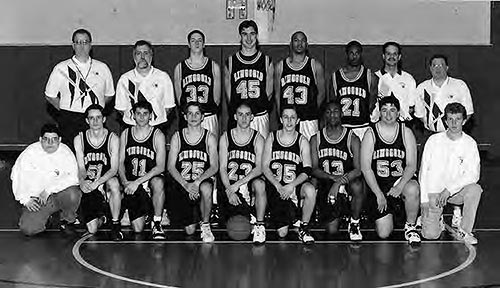
Kneeling left to right: Bob Suty (MGR), Troy Pauley, Steve Datovech, Matt Lusk, Czar Walsh, Ryan Pergola, Jeff Tyree, Jim “Rocco” Martis, and Thomas Schewee (MGR)
Standing left to right: Assistant Coach Bob Osleger, First Assistant Coach Jim Williams, Shawn Jurik, Mike Horan, Tony Thomas, Jamont Kinds, Assistant Rev. Kevin Barner, and Head Coach Phil Pergola
Bill Ryczaj
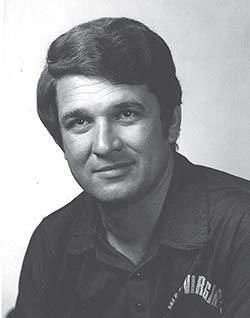
Bill Ryczaj was born in Duquesne, Pennsylvania but spent most of his childhood in Elizabeth, Pa. He was a basketball and baseball standout at Elizabeth Forward High School. In baseball Bill hit over .300 and was a three year letter winner playing at first base. In 1961, he led his EF Warriors to the WPIAL Tournament where they finished runner-up to the Beaver Falls Tigers led by Joe Namath, losing 4-1. One of his teammates on the 1961 team was former Pittsburgh Pirate Bill Robinson. But it was on the basketball court where Bill would make his mark. As a senior Bill averaged 28.8 ppg. on a losing team coached by John Leffard. For his efforts in his senior campaign he was selected first team all-section and honorable mention all-state. He was selected to play in numerous post season all star games. In 2010, Bill was inducted into the Elizabeth Forward all sports Hall of Fame. Bill has also established the Bill Ryczaj family scholarship at Elizabeth Forward High School. This scholarship was established by Bill and his wife Cheryl . The scholarship awards $500 to a graduating senior at E-F intent on furthering his or her education as a full time student at a four year college or university.
Bill was recruited out of high school by former West Virginia basketball coach, George King. He was recruited to be a shooting forward and he enrolled at West Virginia in the fall of 1962. As a freshman he quickly showed the coaches that he was a scorer when he finished the season with a 26.6 ppg. At the time that was the second highest average by a freshman. Only the great Hot Rod Hundley had a better average at 34 ppg. He led the freshmen to a 10-3 overall record.
During his varsity playing days at WVU, Bill continued his reputation as a good shooter. As a sophomore Bill averaged 4.6 ppg and shot 46.4 % from the field. His junior year Bill improved his average to 7.8 ppg . As a senior Bill was selected co- captain of the Mountaineers and averaged 10.5 ppg, shot 76.1 from the line and was the sixth man, giving the team a lift coming off of the bench. Bill’s most memorable game came in 1966 when the Mountaineers thrilled a jam packed Charleston Civic Center crowd with a 94-90 victory over the number one ranked Duke Blue Devils. In that game Bill came off of the bench to score 19 points to help coach Bucky Waters secure the big upset victory. Bill ended his WVU career as a three year letterman.
Bill graduated from WVU in 1966 with a journalism degree. He then moved to Virginia where he coached basketball at Poquoson, Va. where he was an assistant coach and later the head coach. While at Poquoson he was also an assistant football coach. In 1973, he returned to WVU as a graduate assistant for head coach Sonny Moran. He coached the junior varsity squad for two years while working on his master’s degree in physical education, which he received in 1974. After head coach Sonny Moran was relieved of his duties Bill was asked by incoming coach Joedy Gardner to join his staff as an assistant coach. Under coach Gardner, in addition to his coaching duties, he served as the academic advisor to the Mountaineer basketball players . He also was responsible for evaluating high school talent in the Eastern section of the United States . In the summer Bill worked numerous basketball camps throughout West Virginia, Maryland and Pennsylvania. He also worked the Virginia Squires basketball camps and many other camps in other parts of the country.
After three years on Joedy Gardner’s staff Bill joined Sonny Allen’s staff at SMU as an associate head coach of the Mustangs. Following a three year stint with Sonny Allen and his Running Mustangs, Bill decided to go into private business. He first worked for Bike Athletic as a regional promotions director in Knoxville, Tennessee. That was followed by a position with Russell Athletic as a regional sales manager located in Alabama. Later he took a position with Schutt Sports Group as a vice president in charge of sales and marketing.
In 2001, Bill returned to West Virginia as a special assistant to the president of West Virginia University based in Charleston, West Virginia. His duties as a special assistant were visiting high schools throughout West Virginia . He did recruiting and spoke to students about life, careers, and the value of education. He contacted students about how to obtain jobs, and the many programs that are available to students at West Virginia University. He traveled weekly to schools in central and southern West Virginia . He was on the road nine to ten months a year selling the attributes of an education and West Virginia University.
In June of 2013, Bill retired from the university and still resides in Charleston along with his wife, Cheryl. Bill and Cheryl are the parents of two children, Bethany and Ashley and they have four grandchildren. In his retirement Bill does public as well as motivational speaking.
Yancey Taylor
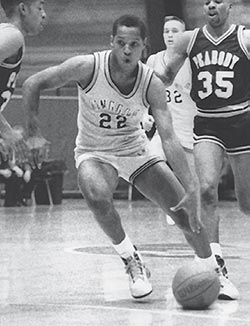
Throughout his basketball career, Donora’s Yancey Taylor’s resume has looked hall of fame worthy. After his playing days, Taylor conducted youth basketball camps and clinics in the Mon Valley and he said, “I like giving back to the community with something God blessed me with.” Tonight, the Mon Valley community honors Yancey with its most prestigious athletic honor – induction into the Mid Mon Valley All Sports Hall of Fame.
At Ringgold High School, from 1987 – 1990, Taylor rewrote the schools storied record books as he appeared in no less than a dozen categories and is the school’s all-time leader in many. Taylor is still the Rams’ career leader in scoring (1,626), assists (437), and three-point baskets (108), as well as the single-season leader in scoring (700) and steals in a season (107). And Yancey is in some elite company from Ringgold basketball players including Ricky Webb, Brian Miller, Ulice Payne, Brian Anselmino, Art Coleman, Jamont Kinds, and Mike Horan.
A rare four-year scholastic starter, Taylor led the Rams to the 1990 WPIAL Class AAAA championship with a 68-55 victory over Mt. Lebanon at the Pitt Field House and an appearance in the PIAA state championship finals in Hershey where Ringgold lost in overtime to heavily favored Glen Mills, 76 to 74.
After brief stints at two junior colleges, Potomac State and Missouri Valley College, he landed at Indiana University of Pennsylvania. Versatile, the 6-foot-4-inch, 210-pound guard-forward could play all five positions on the court. Taylor earned first-team, all-conference honors three consecutive years from 1993 through 1995. He was a second-team National Association of Basketball Coaches (NABC) All-American selection in both 1994 and 1995. During his junior season, Taylor was selected the 1994 Pennsylvania State Athletic Conference Western Division Player of the Year after helping the then-called Indians compile a 27-3 final overall record. IUP made its first-ever NCAA Division II Tournament appearance a memorable one that season by winning the NCAA East Regional before falling to eventual national champion Cal State-Bakersfield in the quarterfinals. IUP opened the season with 24 straight wins, which remains the team’s longest winning streak in school history. Taylor was selected the regional tourney Most Valuable Player after helping IUP earn comeback wins over Edinboro and California University in games contested at the Vulcans’ Hamer Hall. In the regional finals he scored 18 points with eight assists and four rebounds. The following year, IUP rolled to a school-best 29-2 overall record (.935 winning percentage) and its first conference title in 21 years. The program also attained its never-before national ranking of “first”. IUP again won the regional championship and also defeated Central Missouri by 11 points in the quarterfinals before falling to California-Riverside in the national semifinals. Again at his best during the biggest games, Taylor scored IUP’s last nine points in an 11-point win in the 1995 regional final and finished with 21 points, six rebounds and five assists. In the conference title win he scored 16 points with nine assists and four rebounds. In 1992-93, Taylor helped IUP reach the PSAC semifinals for the first time in seven years and compile an 18-9 final overall record. He led the team in scoring that season, averaging 17.8 points per game. Taylor finished with career collegiate totals of 1,257 points (15.1ppg), 406 assists and 424 free throws. His career free throws and assists rank third and fourth respectively in school history while his 53.6 career field goal percentage is 10th and scoring total is 17th. His coach at IUP was Kurt Kanaskie, who is now an assistant coach at Virginia Tech. “There was no secret that Yancey was the one we wanted to have the ball late in the game,” said Kanaskie, who left IUP to be the head coach at Drake and then assisted Ed DeChellis at Penn State. “He was an excellent passer with great vision on the court. Yancey was also a clutch foul shooter, made the right decisions and simply made the plays.”
After putting together efforts worthy of being in the Indiana Hall of Fame, that’s exactly where Taylor found himself on September 14, 2013 when he was among 15 members of the Class of 2013 inducted into the IUP Hall of Fame that coincided with IUP’s football game against Cheyney.
“It’s something that I guess you hope for, but you never expect,” said Taylor after getting his notice from IUP. “I mean, when you make your college’s hall of fame, it shows that you had to be pretty darn good over the length of your career. There is no bigger honor than going into your college’s hall of fame. They told me I’m the first guy from my era there to go in. That’s crazy.
I’ve always enjoyed playing basketball and at the same time I always worked my butt off to be the best I could be. I always felt if you wanted something you had to do it yourself,” he said. “I never did like to lose, so everywhere I went, I expected to win and we usually did.
I just got so pumped up out there and always wanted to go hard,” Taylor said. “I liked the pressure and wanted the ball. At IUP we had such a talented team, which gave me so many options. I could drive, finger- roll or kick it back out to someone, and I always knew we’d score. Taylor credited several people with playing huge roles in his development over the years, including former Donora attorney Ray Amatangelo, former Ringgold basketball coach Phil Pergola and Yancey’s brother, Tracy Taylor. “Ray Amatangelo was the kind of coach who took me, a little skinny kid, first in the draft. Ray did a lot for all the kids.
Nobody, I mean nobody was a bigger supporter of me than my mom, Alma McDonald,” he said. “She died from cancer in 1993. She was my rock.”
Yancey’s high school coach and fellow inductee this evening, Phil Pergola, recalls his years with his top prodigy. “Yancey was born to play basketball. That is all he ever wanted to do. He could play every position on the floor, and he did. He was very confident in his ability. He was a team player. Winning was very important to him. From the results of his playing career, you can see that he got better and better as time passed. His playing days at IUP were fantastic.”
Coach Pergola’s long-time assistant Jim Williams also remembers Yancey. “Probably the most memorable thing I remember about Yancey is how he was always in my living room when I would come home from work. He would call my wife from school and tell her that Coach Will wants me to come over. When I would come home I would ask him why he was here and he would tell me that Miss Lo (my wife) called him and told me to come down. We always had to have a drawer full of cakes and a freezer full of ice cream for him.
There has been no basketball player that I’ve seen or coached compared to Yancey. When we would get in trouble the kids would say get the ball to the General and then the magic would begin. Most people think of him as the schools leading scorer with 1626 points. Some of the additional records that he holds include when he made 15 free throws in a single game and scored 19 points in one quarter against Peabody.
Yancey Taylor was truly a remarkable player and a very unique kid, to say the least and I was blessed in having him call me coach.” Taylor played professionally overseas in Italy and Germany for seven years following his IUP days. Their season runs from September to April. Somewhat of a celebrity playing for the Krefeld Panthers of the German Basketball League and Recklinghausen, he helped lead Krefeld to two league championships while averaging over 25 points per game. He had a single game high of 42. Taylor was so popular in Germany that he was featured in an issue of KO Journal, an international publication that hits a number of countries, including the United States.
Today, Taylor lives in Rostraver Township and is a sales rep for a New York-based company, Act Entertainment, which does commercial work for NFL players.
He also does a lot of traveling and rubs shoulders with many professional athletes and entertainers.
“I get around,” he said with a smile. “I never did like to sit still.”
Yancey has a daughter Nicole.
Ringgold High School Basketball 1990 WPIAL Class AAAA Champions
(29-3)
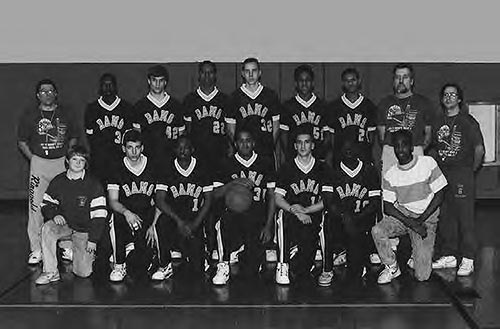
Kneeling left to right: Bob Suty (MGR), Troy Pauley, Steve Datovech, Matt Lusk, Czar Walsh, Ryan Pergola, Jeff Tyree, Jim “Rocco” Martis, and Thomas Schewee (MGR)
Standing left to right: Assistant Coach Bob Osleger, First Assistant Coach Jim Williams, Shawn Jurik, Mike Horan, Tony Thomas, Jamont Kinds, Assistant Rev. Kevin Barner, and Head Coach Phil Pergola
Past Inductees
Read about our past Inductees here!